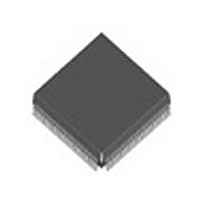BCM5208KPF Broadcom, BCM5208KPF Datasheet - Page 9

BCM5208KPF
Manufacturer Part Number
BCM5208KPF
Description
Manufacturer
Broadcom
Datasheet
1.BCM5208KPF.pdf
(62 pages)
Specifications of BCM5208KPF
Number Of Receivers
4
Data Rate
10/100Mbps
Operating Temperature Classification
Commercial
Operating Supply Voltage (min)
3.14V
Mounting
Surface Mount
Operating Temperature (max)
70C
Operating Temperature (min)
0C
Lead Free Status / RoHS Status
Not Compliant
Available stocks
Company
Part Number
Manufacturer
Quantity
Price
Company:
Part Number:
BCM5208KPF
Manufacturer:
ON
Quantity:
201
Company:
Part Number:
BCM5208KPF
Manufacturer:
BCM
Quantity:
846
Part Number:
BCM5208KPF
Manufacturer:
BROADCOM
Quantity:
20 000
n BCM5208
November 3, 1999
SECTION 1: FUNCTIONAL DESCRIPTION
OVERVIEW
The BCM5208 is a single-chip device containing four independent Fast Ethernet transceivers. Each performs all the
physical layer interface functions for 100BASE-TX full-duplex or half-duplex Ethernet on CAT 5 twisted pair cable and
10BASE-T full- or half-duplex Ethernet on CAT 3, 4 or 5 cable. Each port may also be configured for 100BASE-FX full or
half-duplex transmission over fiber-optic cabling when paired with an external fiber-optic transmitter and receiver.
The chip performs 4B5B, MLT3, NRZI, and Manchester encoding and decoding, clock and data recovery, stream cipher
scrambling/descrambling, digital adaptive equalization, line transmission, carrier sense and link integrity monitor, Auto-
Negotiation, and MII management functions. The BCM5208 may be connected to a MAC or repeater controller through the
MII on one side, and connects directly to the network media on the other side through isolation transformers for UTP modes
or fiber-optic transmitter/receiver components for FX modes. In repeater mode, the MII ports may be bussed with other
BCM5208 devices. Port multiplexing logic also allows the BCM5208 to be optimized for multi-segment and dual-speed
repeater configurations. The BCM5208 is fully compliant with the IEEE 802.3 and 802.3u standards.
ENCODER / DECODER
In 100BASE-TX and 100BASE-FX modes, the BCM5208 transmits and receives a continuous data stream on twisted pair
or fiber-optic cable. When the MII transmit enable is asserted, nibble-wide (4-bit) data from the transmit data pins is
encoded into 5-bit code-groups and inserted into the transmit data stream. The 4B5B encoding is shown in Table 1 on page
3. The transmit packet is encapsulated by replacing the first two nibbles of preamble with a start of stream delimiter (J/K
codes) and appending an end of stream delimiter (T/R codes) to the end of the packet. When the MII transmit error input
is asserted during a packet, the transmit error code group (H) is sent in place of the corresponding data code group. The
transmitter will repeatedly send the idle code group between packets.
In TX mode, the encoded data stream is scrambled by a stream cipher block and then serialized and encoded into MLT3
signal levels. A multimode transmit DAC is used to drive the MLT3 data onto the twisted pair cable. In FX mode, the
scrambling function is bypassed and the data is NRZI encoded. The multimode transmit DAC drives differential positive
ECL (PECL) levels to an external fiber-optic transmitter.
Following baseline wander correction, adaptive equalization, and clock recovery in TX mode, the receive data stream is
converted from MLT3 to serial NRZ data. The NRZ data is descrambled by the stream cipher block and then deserialized
and aligned into 5-bit code groups.
In FX mode, the receive data stream differential PECL levels are sampled from the fiber-optic receiver. Baseline wander
correction, adaptive equalization, and stream cipher descrambling functions are bypassed and NRZI decoding is used
instead of MLT3.
The 5-bit code groups are decoded into 4-bit data nibbles, as shown in Table 1. The start of stream delimiter is replaced
with preamble nibbles and the end of stream delimiter and idle codes are replaced with all zeros. The decoded data is driven
onto the MII receive data pins. When an invalid code group is detected in the data stream, the BCM5208 will assert the MII
RXER signal. The chip will also assert RXER for several other error conditions which improperly terminate the data stream.
While RXER is asserted, the receive data pins will be driven with a 4-bit code indicating the type of error detected. The error
codes are listed in Table 2 on page 4.
In 10BASE-T mode, Manchester encoding and decoding is performed on the data stream. The multimode transmit DAC
performs pre-equalization for 100 meters of CAT 3 cable.
LINK MONITOR
In 100BASE-TX mode, receive signal energy is detected by monitoring the receive pair for transitions in the signal level.
Signal levels are qualified using squelch detect circuits. When no signal or certain invalid signals are detected on the
receive pair, the link monitor will enter and remain in the “Link Fail” state where only idle codes will be transmitted. When
a valid signal is detected on the receive pair for a minimum period of time, the link monitor will enter the “Link Pass” state
and the transmit and receive functions will be enabled.
In 100BASE-FX mode, the external fiber-optic receiver performs the signal energy detection function and communicates
this information directly to the BCM5208 through the differential SD +/- pins.
In 10BASE-T mode, a link-pulse detection circuit constantly monitors the RD+/- pins for the presence of valid link pulses.
B r o a d c o m C o r p o r a t i o n
Document 5208-DS03-R¥¥¥¥¥
Page 1












